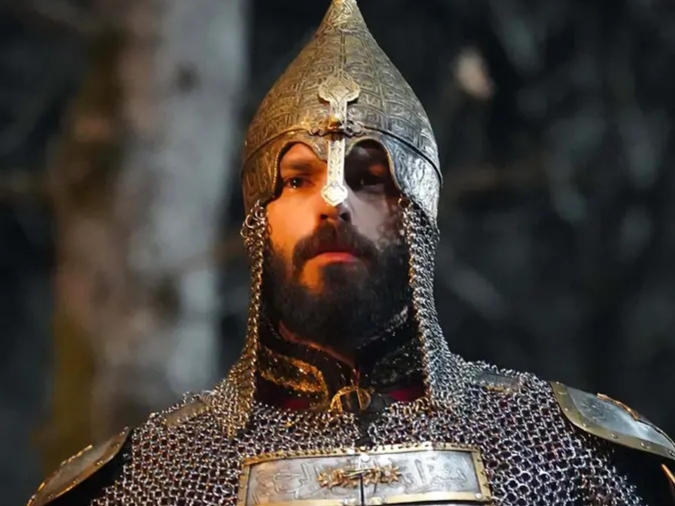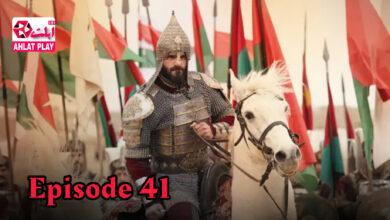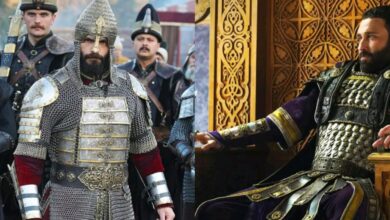Mehmed Fatihler Sultani Episode 38 With Urdu Subtitles

Mehmed Fatihler Sultani Episode 38:Urdu Subtitles
In Episode 38 of Mehmed Fatihler Sultani (The Conqueror Mehmed), the epic saga continues as Sultan Mehmed II, one of the most powerful and visionary rulers in history, faces his greatest challenge yet in his quest to conquer Constantinople. The episode showcases intense battles, strategic decisions, and historical moments that shaped the course of history. This article will delve into the key events of this episode, including the fierce confrontation between Sultan Mehmed and the Byzantine Emperor Constantine, the emotional turmoil of Mara Hatun, the siege of Constantinople, and the iconic historical words of Sultan Mehmed.
The Battle Between Sultan Mehmed and Emperor Constantine
The central event in Episode 38 is the conflict between Sultan Mehmed II and the Byzantine Emperor Constantine XI Palaiologos, who is desperately trying to defend his empire from the encroaching Ottoman forces. Sultan Mehmed, determined to fulfill his vision of conquering Constantinople, is not only fighting against the Byzantine Empire but also against the forces of history, as he knows that the fall of this city will mark the end of the Byzantine Empire and the beginning of the Ottoman Empire’s dominance in the region.
The strategic brilliance of Sultan Mehmed is on full display during this battle. He uses a combination of military ingenuity, psychological warfare, and sheer determination to weaken the defenses of the city. His troops lay siege to the walls of Constantinople, cutting off vital supply lines and forcing the inhabitants into a state of desperation. Sultan Mehmed’s resolve is unshakable, as he knows that the conquest of this legendary city will bring him one step closer to his ultimate goal of uniting the Muslim world under one rule.
On the other hand, Emperor Constantine XI, though outnumbered and outmatched, fights valiantly to protect his people. His leadership is marked by bravery, but he knows that the odds are stacked against him. As the siege intensifies, the emotional stakes are raised, and the weight of history hangs over both leaders. Their clash symbolizes the final battle between two great empires: the Byzantine and the Ottoman.
Mara Hatun’s Struggle and the Wife of Shaheed
Mara Hatun, an important character in the series, plays a crucial role in Episode 38 as she grapples with the emotional and moral challenges brought about by the war. Mara, who has her own personal connection to the conflict, is torn between her loyalty to Sultan Mehmed and her own internal struggles. As the siege continues, Mara faces her own trials, including the emotional weight of the situation and the loss of loved ones.
The subplot involving the wife of a shaheed (martyr) adds further emotional depth to the episode. This character represents the personal toll of war and the sacrifices made by the families of soldiers who fight for a cause greater than themselves. The wife of the shaheed is devastated by the loss of her husband, but she is also determined to honor his sacrifice. Her grief becomes a poignant reminder of the human cost of war, and her story resonates with those who have lost loved ones in battle.
Mara Hatun’s connection to the wife of the shaheed highlights the contrast between personal sacrifice and the larger political and military goals of the Sultan. While Sultan Mehmed fights for the glory and expansion of the Ottoman Empire, Mara and the wife of the shaheed represent the emotional toll of the war on individuals. This dual perspective creates a compelling narrative that blends personal struggle with the grand historical forces at play.
Sultan Mehmed’s Naval and Land Forces: The Historic Moment of Ships on Land
One of the most striking elements of Episode 38 is the portrayal of Sultan Mehmed II’s military ingenuity. The Sultan employs both land and naval forces in his quest to conquer Constantinople. The historical significance of this moment is particularly evident when Sultan Mehmed uses an unprecedented tactic: he orders his ships to be transported over land.
Historically, Sultan Mehmed’s brilliant strategy involved the construction of a land route for his ships, allowing them to bypass the chain of defense that the Byzantines had set up in the Golden Horn. This is depicted in the episode as an extraordinary feat of engineering and logistics. The Ottoman forces, under Sultan Mehmed’s orders, used greased logs and ropes to move the ships overland from the Bosphorus to the Golden Horn, bypassing the enemy’s naval blockade. This maneuver allowed the Ottoman navy to effectively encircle the city from both land and sea, putting immense pressure on the defenders of Constantinople.
This tactic is one of the most famous moments in the history of the siege and was a game-changer in the battle for Constantinople. The Byzantine defenders, who believed their city was safe from naval attack due to their strategic positioning, were caught off guard. Sultan Mehmed’s ships appeared seemingly out of nowhere, adding a crucial element to the Ottoman siege and making it nearly impossible for the Byzantines to fend off the assault from both directions.
This innovative strategy not only demonstrated Sultan Mehmed’s military genius but also his ability to think outside the box and take bold risks to achieve victory. It is a defining moment in the episode, showing how the Sultan’s vision and leadership led to one of the most significant and transformative military successes in history.

The Attack on Constantinople and Sultan Mehmed’s Historical Words
The final moments of Episode 38 build to the iconic attack on Constantinople. Sultan Mehmed’s forces launch a final, decisive assault on the city’s walls, overwhelming the defenders and breaching the gates. As the Ottoman forces begin to pour into the city, Sultan Mehmed’s words to his troops are historic and inspiring.
In the series, Sultan Mehmed delivers a powerful speech to his soldiers before the final assault. His words emphasize the importance of the conquest, not just for the empire, but for the broader vision of uniting the Muslim world and fulfilling the prophecy that the city will fall to the Ottomans. He speaks of the glory that awaits them and the eternal reward they will receive for their bravery. Sultan Mehmed’s leadership is shown to be both inspiring and commanding, as he rallies his troops to fight with all their strength and determination.
His famous historical words, “When the walls of Constantinople fall, the world will change,” resonate deeply in the episode. These words encapsulate the significance of the conquest and the monumental shift that is about to take place in history. The fall of Constantinople in 1453 marked the end of the Byzantine Empire and the beginning of the Ottoman Empire’s dominance in the region. Sultan Mehmed’s vision was realized, and his conquest became a turning point in world history.
Conclusion
Mehmed Fatihler Sultani Episode 38 provides a captivating portrayal of the epic siege of Constantinople, showcasing the strategic genius of Sultan Mehmed, the emotional struggles of characters like Mara Hatun and the wife of the shaheed, and the historic significance of the battle. The episode captures the intensity of the conflict, the sacrifices made by individuals, and the determination of a ruler whose vision reshaped the course of history. Through powerful speeches and unforgettable moments, Sultan Mehmed emerges as a leader whose legacy continues to echo throughout time.



